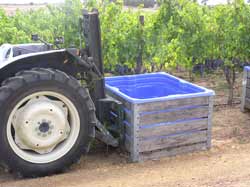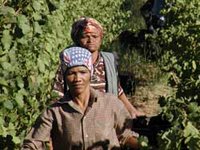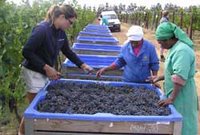Today is the first day of harvest that we are able to sit back and relax a little after what we can describe as a spectacular harvest - the timing and the quality have been right on the money. Phil is a genius when it comes to predicting harvest date and will even go so far as to book flights from California to South Africa on the back of his hyper-sensitive phenology and modelling data. It is quite incredible.
Today Zelma delarted for a well-deserved holiday with one of her 'rock-star' winemaking buddies called May-Anne Graf who actually worked as assistant winemaker under Zelma at Simi. They are off to the Natal Midlands which is in Kwazulu-Natal - for those that dont know this is one of the ten provinces of SOuth Africa. I am very jealous.
May-Anne Graf who actually worked as assistant winemaker under Zelma at Simi. They are off to the Natal Midlands which is in Kwazulu-Natal - for those that dont know this is one of the ten provinces of SOuth Africa. I am very jealous.
We are now starting to think about beddding the vines down and starting to get them ready for a good sleep during the upcoming winter. There is a lot to be done and the first order of business is to spread a fine layer of 'designer mulch' onto every drip emitter in the vine yard - this is an enormous job and going to be crucial as we plan to leach the nutrients from the mulch/manure into the soil through the organically sensitive techniwue of runnning drip irrigation through it.
We also took delivery of our new tracctor last week - very exciting.
MIKE RATCLIFFE
Today Zelma delarted for a well-deserved holiday with one of her 'rock-star' winemaking buddies called
 May-Anne Graf who actually worked as assistant winemaker under Zelma at Simi. They are off to the Natal Midlands which is in Kwazulu-Natal - for those that dont know this is one of the ten provinces of SOuth Africa. I am very jealous.
May-Anne Graf who actually worked as assistant winemaker under Zelma at Simi. They are off to the Natal Midlands which is in Kwazulu-Natal - for those that dont know this is one of the ten provinces of SOuth Africa. I am very jealous.We are now starting to think about beddding the vines down and starting to get them ready for a good sleep during the upcoming winter. There is a lot to be done and the first order of business is to spread a fine layer of 'designer mulch' onto every drip emitter in the vine yard - this is an enormous job and going to be crucial as we plan to leach the nutrients from the mulch/manure into the soil through the organically sensitive techniwue of runnning drip irrigation through it.
We also took delivery of our new tracctor last week - very exciting.
MIKE RATCLIFFE

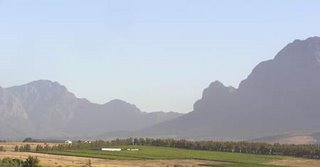
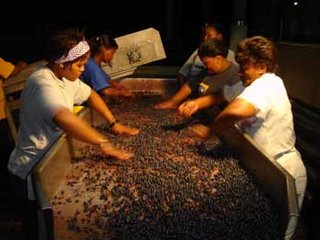

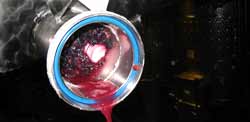


 Monitoring fermentation, and planning the work
Monitoring fermentation, and planning the work


